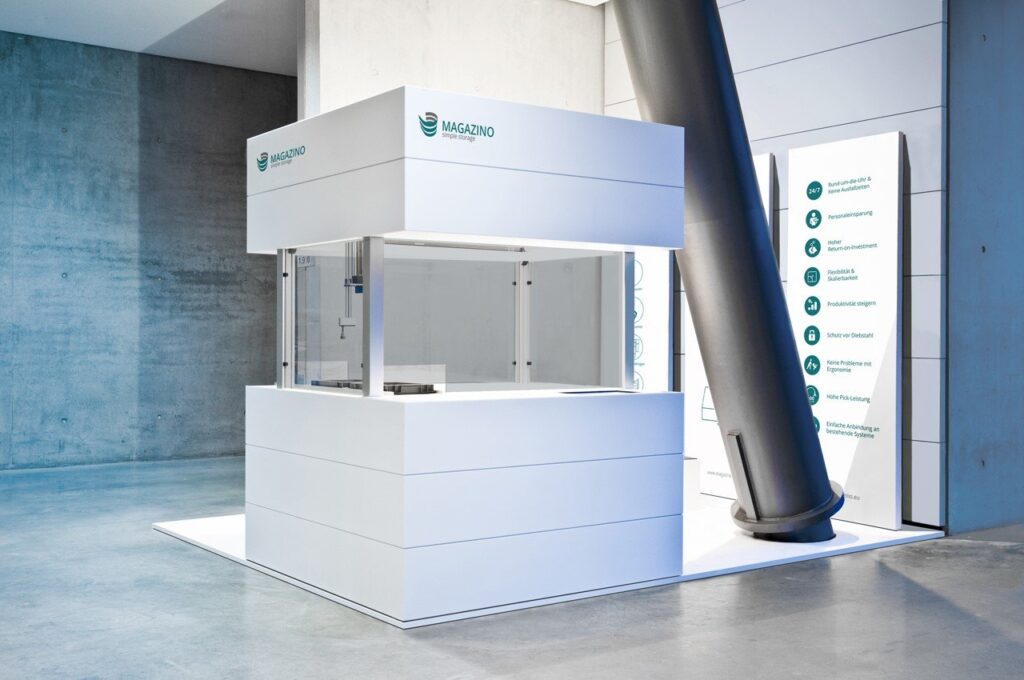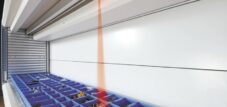Human-robot collaboration: the first step towards a fully automated warehouse?
Industry 4.0 is one of the major buzzwords at this year's leading industrial trade fair in Hanover, and indeed, the halls are lined with the stands of suppliers who have chosen the creation of solutions for digital networking in industry and production, as well as for the future collaboration between humans and machines, as their business focus. Because the more efficiently and flexibly these systems are integrated, the more productive companies can be.
Use in production
As the use of intelligent machine systems becomes increasingly prevalent in production, human-robot collaboration (HRC) is gaining significant importance. It's no surprise that safety is paramount, as machines and humans often work side by side. For example, the Swiss company ABB robot YuMi at the trade fair for the first time. The name stands for "you and me" (roughly: we work together) and is intended to express seamless cooperation. The device is a collaborative assembly system equipped with two grippers featuring touch-sensitive sensors, a precise vision system, and a number of integrated safety components. It was primarily developed to respond to the rapid and changing manufacturing requirements in the electronics industry and small parts production in general, although the robot will gradually be deployed in other sectors as well. The main focus of the design is safety, enabling the desired close interaction. In addition, the system communicates with its human colleagues, for example, by alerting them to errors.
At the trade fair, YuMi is one of many systems from manufacturers dedicated to refining human-robot collaboration (HRC). Close cooperation between humans and machines makes perfect sense not only in industrial manufacturing, but also in other sectors, when it comes to increasing productivity and profitability.
Human-robot collaboration in intralogistics
Even in intralogistics, which despite increasing automation remains relatively labor-intensive, the introduction of robots makes perfect sense. Although automated high-bay warehouses, carousel storage systems, and vertical carousel systems are becoming ever more sophisticated and efficient, classic solutions with shelving units still prevail in many places. Cost-effective and flexible, they do indeed have their advantages, especially when it comes to a very wide range of products that need to be kept in stock. With this solution, human labor, along with energy costs, has become the driving cost factor. It's no wonder that more and more companies are looking for ways to reduce the proportion of human labor in this type of warehouse solution as well. Amazon's Kiva robot system , in which mobile units move the shelves directly to the picking stations, is just one of many solutions.
Furthermore, Kuka and Swisslog presented a combined human-robot workstation for order picking at the trade fair. This fully automated goods-to-person picking solution, dubbed Automated Item Pick , allows warehouse workers and a robotic gripper to simultaneously fill the available order containers without the need for any barriers or enclosures between humans and machines. The gripper identifies the objects using sensors and image processing technology.
Picking robots are taking over the work of warehouse workers
And where a warehouse worker would normally wait to prepare the delivered items for shipment, another robot developed by Magazino be deployed. This robot, Kado , functions as a picking station, meaning it receives the delivered goods using a scanner and camera, identifies them, and then picks and prepares them for shipping or the next production stage. Currently, due to their design, the robots cannot grasp all objects, such as soft items like shirts or dresses, which the suction arms cannot reach. However, it is expected that the manufacturer or supplier will find a solution for this in the near future.
The system developed by Magazino allows for a gradual expansion of robot deployment. It's possible to start with one device and, if successful, gradually increase Torus robots Kados robots picking goods
The combined use of both devices could thus make it possible in the future to manage a conventional shelving warehouse entirely without human labor. Besides reduced labor costs, this primarily means a significant extension of operating hours, as the robotic system is ready for use around the clock, seven days a week.
But the use of these electronic assistants isn't limited to shelving systems: automated small parts warehouses, shuttle systems, and paternoster lifts can also benefit from the picking station. In these automated retrieval systems, the Kado integrated at the picking opening instead of the usual packing station – precisely where the warehouse worker would normally stand. This solution also enables unmanned warehouse management, which, in addition to the advantages already mentioned, also leads to reduced energy costs, as the warehouses no longer require the same amount of lighting or heating. It's therefore no surprise that using such a robot-warehouse combination will result in a significant boost in productivity, quickly recouping the additional investment costs. Combined with increased flexibility and shorter throughput times in the warehouse, this makes the system an attractive alternative to conventional intralogistics solutions.
Therefore, from an economic perspective, there is hardly anything standing in the way of the widespread introduction of pick-by-robot systems and the creation of fully automated warehouses. Especially since it is foreseeable that, due to both the increasing number of manufacturers operating in this field and the higher production volumes of robots, prices for warehouse logistics providers will tend to decrease.


